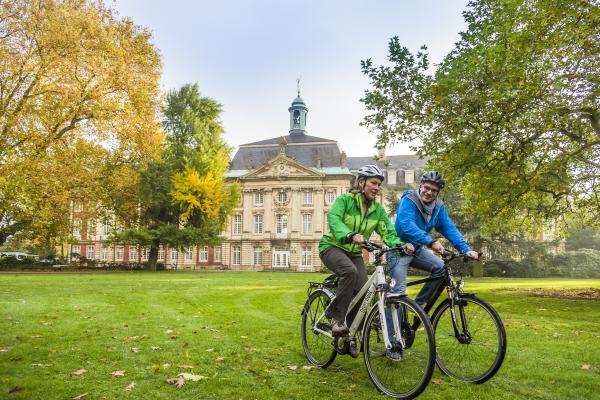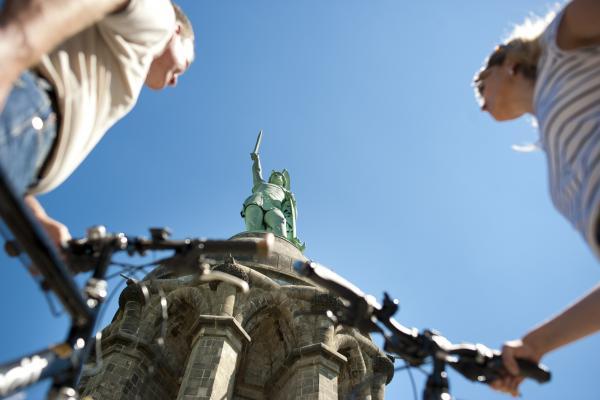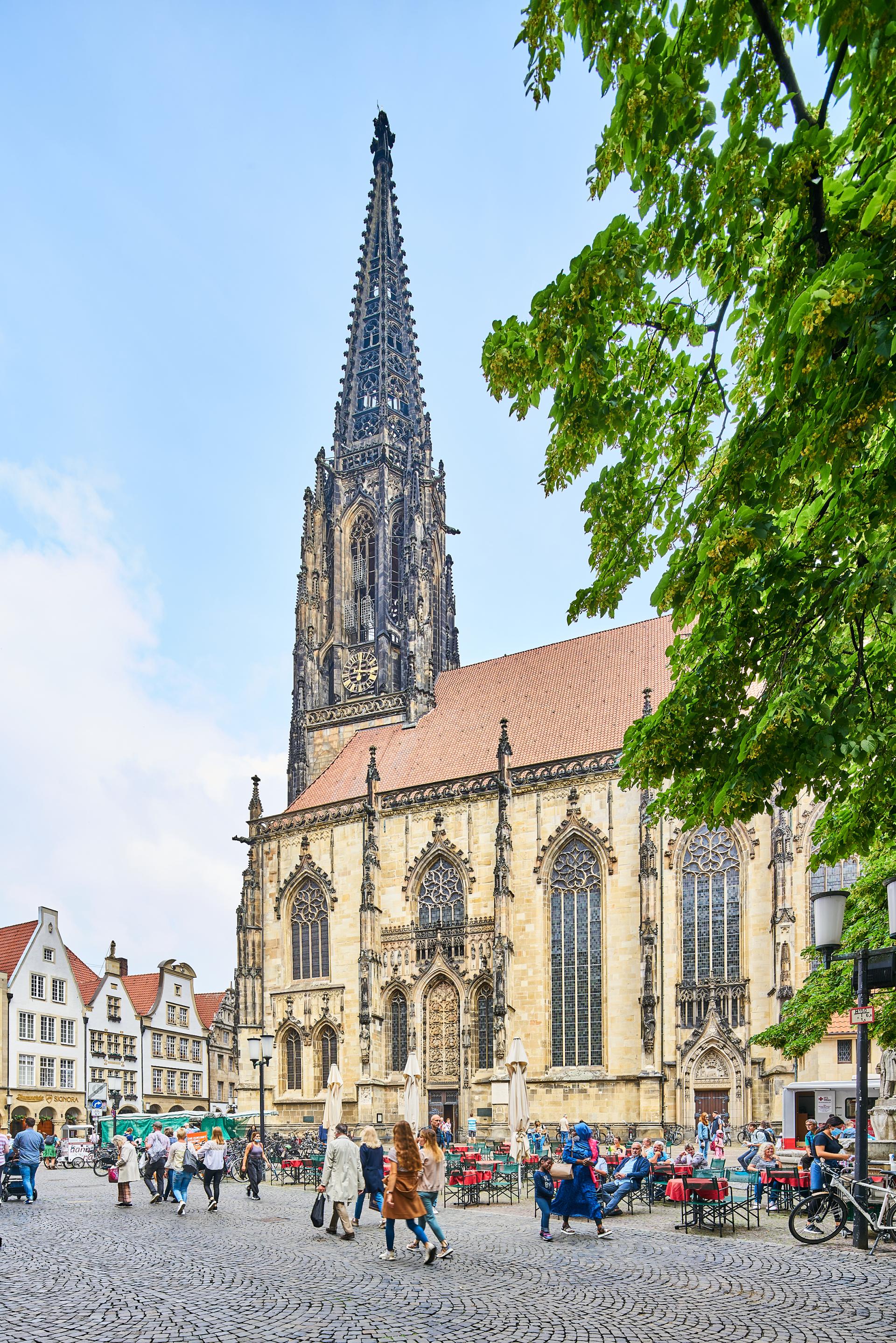
Luminous bright sandstone buildings, picturesque alleys, imposing half-timbered houses and lively squares - again and again charming cityscapes "tell" from the rich past of the places from Münsterland to East Westphalia-Lippe. Through the constant alternation of city and countryside, this route along the historic cities offers particularly much variety: while it goes by bike briskly over land and it is after the flat parkland increasingly hilly and with more views, the cities with their interesting stories and cultural highlights invite you to linger.
That the Westphalians in particular played a pioneering role in the development of markets in the North Sea and Baltic Sea regions, and thus in the founding of the Hanseatic League, is hardly known to many. Until the 14th century, famous trade routes led through the region, where linen, cloth goods and metal products were produced. Numerous Westphalian Hanseatic cities were involved in the Europe-wide association of merchants.
The economic success of the Hanseatic League can still be seen today in the cityscapes, for example, magnificent town halls, representative trading houses with richly decorated facades and gables and elaborate fortifications to protect against potential attackers. Even some naming such as the Münster Hansa quarter are due to the Hanseatic era.
European history and building culture can be wonderfully experienced when exploring the old towns, where they become visible, tangible and palpable in many ways. Just as, by the way, as today's lifestyle of these living historic places!
.
Your highlights on this culture story

Münster
The Prinzipalmarkt is the "good parlor" of Münster and the landmark of the city. Nowhere better to stroll than in the arcades, where there are many individual stores.
With its characteristic gabled houses and arcades, the square tells of the life and work of merchants from the Middle Ages through the time of the Hanseatic League until today. And of great world history, which manifests itself in the town hall of the Peace of Westphalia. In the Gothic building from the 14th century, two peace treaties were concluded in 1648, which finally ended the eighty-year war of independence of the Netherlands and the Thirty Years' War in Europe. The latter began as a confessional war and soon developed into a devastating struggle for European supremacy. For 5 years, the major European powers negotiated in Münster and Osnabrück and thus laid a foundation for the European peace order.
.
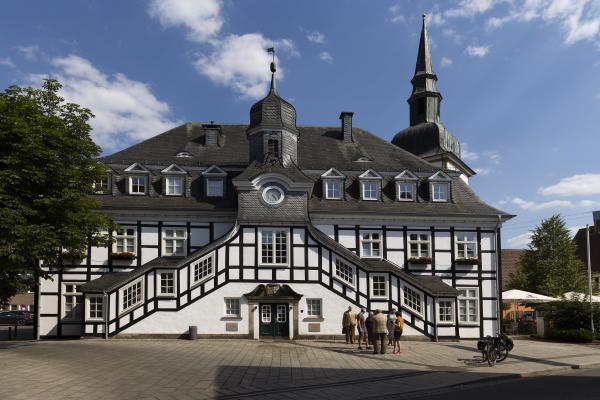
Rietberg
Beautiful city on the Ems, state-recognized resort or city of beautiful gables: Rietberg has many titles and with its beautiful half-timbered backdrop really has a very special charm. The former county residence and state capital looks back on an eventful European history. First mentioned in a document in 1150, Prince Wenzel Anton von Kaunitz-Rietberg, the later state chancellor of the Austrian Empress Maria Theresia, ruled here in the 18th century, for example. Today, many half-timbered houses with centuries-old inscriptions are protected monuments in the historic center. The imposing town hall is the landmark of the city, but also the former Franciscan monastery or Haus Münte, from where once Viennese official business was conducted, are absolutely worth seeing. You can relax during a walk along the Wallpromenade or in the Gartenschaupark Rietberg, the former site of the NRW State Garden Show of 2008.

Rheda-Wiedenbrück
With its numerous historic old buildings, Wiedenbrück looks back on a history of over 1000 years. The former by-town of Osnabrück has a long trading tradition. In addition to magnificent half-timbered houses of former merchants with richly decorated facades, you will also find many Ackerbürgerhäuser with wide Deelen and simple craftsmen's houses. More than 200 buildings are listed here! Around the historic market square there are many owner-operated stores, delicatessens and small boutiques.
Since 1970, Rheda-Wiedenbrück is united to the double city. Like a green ribbon, the 3 km long Flora-Westfalica Park connects the Wiedenbrücker old town with Rheda Castle, which was first mentioned in 1180 and is famous v.a. for its double chapel from the Staufer period and the valuable music library.
Do not miss!
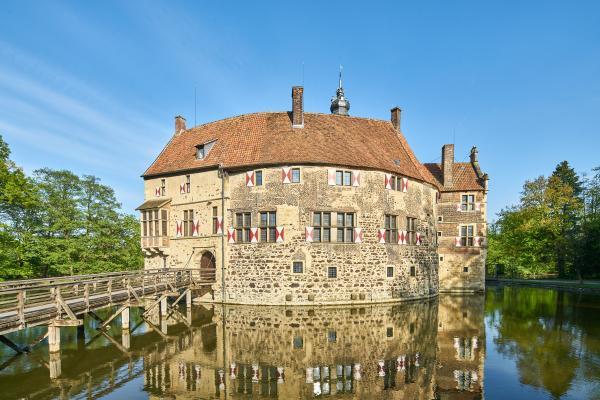
Castles and chateaus region
They are strung like pearls through the gentle park landscape of the Münsterland: imposing moated castles, romantic fortresses, enchanted monasteries and abbeys. Here you can experience history and stories as intensively as in hardly any other region. Welcome to the castles and palaces region Münsterland.
No less than 100 palaces, castles, manor houses, monasteries, manor houses and noble residences await you here. This density of stately homes, the abundance of moated castles and the number of historic noble families who have tended the estates since the Middle Ages make the area between Rheine in the north and Haltern in the south, Bocholt in the west and Warendorf in the east a truly amazing region of castles and stately homes. A region where you can discover and experience an infinite amount - and on particularly flat, pleasant to ride routes.
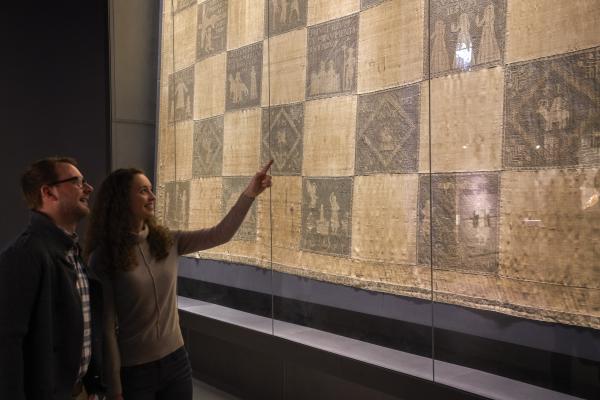
RELíGIO
As a special museum of cultural history, dthe RELíGIO in Telgte possesses not only one of the most extensive collections of nativity scenes in Germany, but also one of the most important cultural assets in Westphalia: the Telgte Hunger Cloth. Based on the religious art and culture in Westphalia, interdisciplinary exhibitions are held here, which illuminate the various world religions and cultures and bring them into dialogue.
The museum is located in the immediate vicinity of the pilgrimage chapel, which was founded in 1654 by Münster's Prince-Bishop Christoph Bernhard von Galen and houses the image of Our Lady of Sorrows. The chapel, St. Clement's Church and RELíGIO form the Telgte triad, which is known far beyond the borders of Münsterland. One of the old Jakobswege, which like the Europaradweg R1 connect large parts of Europe, leads from Bielefeld via Telgte to Wesel and is walked annually by thousands of pilgrims.
.
Regional products along the cultural history
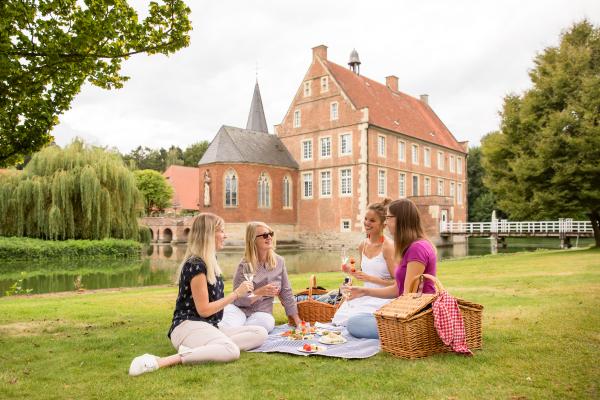
Picnic in Münsterland
Little break fancy? Picnicking in Münsterland goes always and everywhere! Gardens, parks and promenades offer many beautiful picnic spots and diverse picnic events. Whether at the lake, with relaxed acoustics of the slight movement of the water, in the forest, in the middle of the city or in the castle garden with wonderful scenery: Enjoy the small vacation moment on your picnic blanket.
.
You do not have your own picnic basket with you right now, but you definitely want to enjoy some delicacies from the region? No problem, because there are some restaurateurs here where you can get your ready-packed picnic basket (on pre-order) with many different delicacies.

Münsterland Collection
You are looking for a very special gift or want to treat yourself? How about a piece of home?
Here you will find high-quality and regional products from the beautiful Münsterland. Are you a gourmet? Then perhaps the delicious Gräftenwasser, as aromatic juniper schnapps or as a sweet vanilla liqueur would be something for you. Are you creative? Then you will surely be happy about the fancy coloring book or the tricky puzzle. Or do you want to expand your picnic equipment? Take a look around and discover the Münsterland collection.

Rieti and herb liqueur
Who would like to take a small reminder of the city of the beautiful gables, will find in the Rietberg tourist information. The small stuffed animal Rieti, the cuddly city mascot, fits in every bicycle bag. After a strenuous tour, perhaps a small herbal liqueur, the noble drop from Rietberg, may be allowed. A cool white wine tastes great from the "Weingenuss in Rietberg" glasses. Those who love hot coffee can enjoy it from the corresponding Rietberg cup. Lots of fresh regional products are always on Fridays at the Rietberg weekly market.
The highlights along the cultural history
Our daily stage recommendation
Stage Münster-Gütersloh
The flat stage through the Münsterland park landscape between Münster and Gütersloh tells stories about rivers and mills, horses and mammoths, saints and monks, but also dunes and Neanderthals.
Etappe Gütersloh-Detmold
Städte mit schönen Giebeln, Kunst in Gärten und Parks, Urwald in Fluss- und Bachtälern, Jagdschlösser in Wald und Stadt, Pferde in den Dünen und Safari in der Senne: Die anfangs flache und später sportlichere Etappe ist ganz schön vielfältig.



